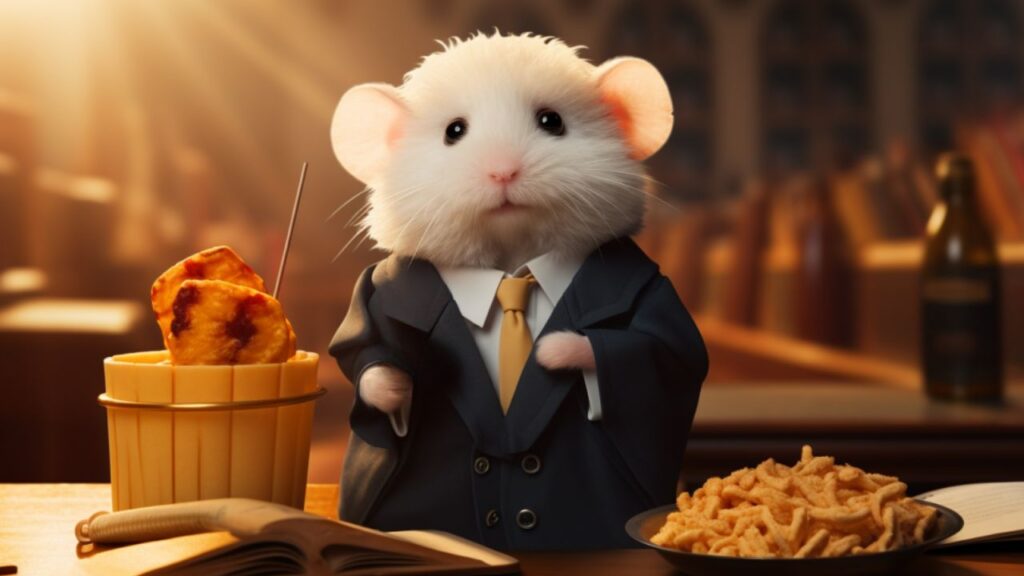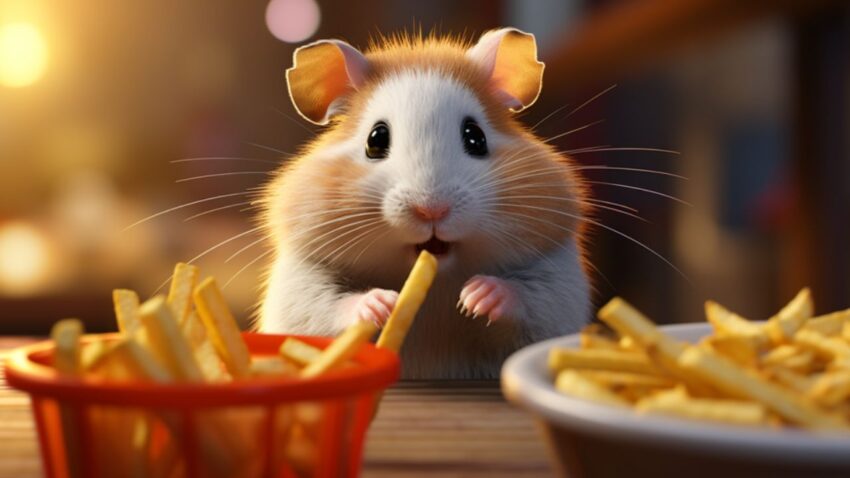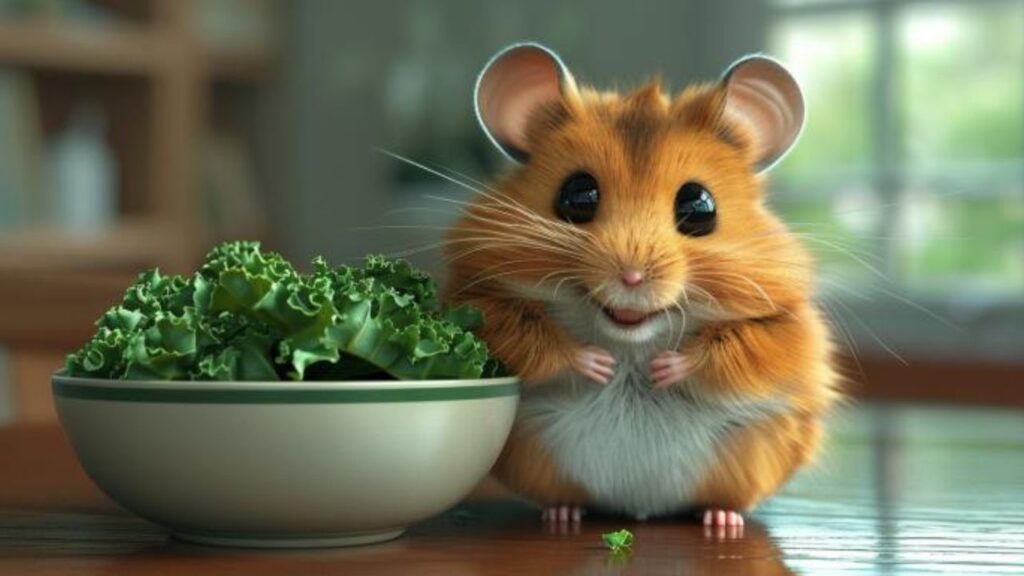TL;DR Summary
Hamsters’ dietary needs are specific and should be met with care. Fries, commonly enjoyed by humans, are packed with salt, unhealthy fats, and potential additives, making them less than ideal for hamsters. While some rodent enthusiasts have occasionally treated their pets with a fry, it’s not recommended as a regular addition to a hamster’s diet. If given, it should be unsalted, free from additives, and in minimal amounts. However, with healthier alternatives available, it’s best to avoid giving fries to hamsters. It’s safer to keep fries off your hamster’s menu. Remember, a happy hamster is a wheel-y happy you!
The captivating world of hamsters is one of intrigue and continuous discovery. These tiny creatures, with their adorable whiskers, round eyes, and ever-inquisitive nature, have not only made a place in our homes but also in our hearts. As their popularity as household pets continues to grow, so does the interest in understanding their every need, especially when it comes to nutrition. Every morsel of food, every tiny seed, and every tidbit we offer them is not just about filling their tiny bellies; it’s about ensuring their well-being. And among the myriad of food-related questions that arise, one stands out in particular: Can hamsters eat fries? It’s a question that’s been debated in pet forums, pondered upon in vet clinics, and even tested out by daring hamster owners. This article aims to provide a definitive answer, combining rigorous scientific research with my own rich experiences in the realm of rodentology.
Diving into the Fascinating World of Hamster Diet
To truly appreciate the depth of this question, we must first embark on a journey through the diverse and intricate diet of the hamster. In their natural habitat, these small mammals are avid foragers, consuming a mix of seeds, grains, fruits, and even the occasional insect. This diverse diet equips them with the vitamins, minerals, and energy they require to lead a healthy, active life. In contrast, our homes offer them a vastly different environment, one where their natural diet can be supplemented or even replaced by a range of human foods. But is this change always beneficial? Or could some of our foods, despite being delicious to us, pose potential hazards to our furry friends?
Posing the Crunchy Question: Can Hamsters Eat Fries?
Such is the case with fries—a universally adored snack. Crisp, golden, and oh-so-delicious, they are a staple in many of our diets. But can these fried wonders be shared with our hamster companions? It’s not merely a matter of taste but a question of nutrition, health implications, and overall well-being. As we proceed, we’ll dissect this question from every angle, ensuring that by the end, you’ll have an answer rooted in science, observation, and utmost care for these delightful creatures.
The Composition of a Fry

Ah, the humble potato fry! The star of fast-food joints, the irresistible side dish, the snack that’s loved universally. But what makes up this golden delight? Is it just a mere potato taken for a hot oil bath? Let’s peel back the layers and delve deeper into what constitutes a typical fry.
What Goes Into a Typical Fry: Ingredients & Nutritional Breakdown
The primary ingredient, quite predictably, is the potato. This starchy tuber is rich in carbohydrates, primarily in the form of starch. It also contains some essential vitamins and minerals, such as Vitamin C, potassium, and certain B vitamins. When transformed into a fry, however, its nutritional profile undergoes a significant shift.
The frying process, typically done in oils like canola, sunflower, or soybean, infuses the potato with fats. While these fats can be a source of energy, they predominantly fall under the category of unsaturated fats. Still, depending on the frying process and the type of oil used, saturated fats can make a notable presence, which isn’t the best for health in excessive amounts.
To enhance the taste, fries are often seasoned – and this is where additional ingredients come into play. Salt, primarily, but also various other seasonings and additives, depending on the flavor and brand. Some fries may even contain traces of sugar or dextrose to achieve a consistent golden color when fried.
The Good, the Bad, and the Salty: Components of Fries to Watch Out For
While fries are undeniably delicious, they come with a mixed bag of nutritional components. On the positive side, the unsaturated fats present can be a beneficial source of energy, and the original nutrients of the potato, like potassium and Vitamin C, remain valuable.
However, there are some concerns. The salt content in fries can be alarmingly high. Excessive salt is not only a concern for humans but even more so for small creatures like hamsters. High sodium intake can lead to several health complications, including high blood pressure and kidney strain.
Furthermore, the additives and preservatives introduced to maintain flavor and freshness can be a cause for concern. While these might be approved for human consumption in regulated amounts, their effects on tiny hamsters can be magnified due to their smaller body size.
Lastly, the fat content, while providing energy, can lead to obesity and related health issues if consumed regularly. Given that hamsters are already prone to obesity, especially the commonly kept Syrian hamsters, introducing high-fat foods like fries into their diet can amplify these risks.
In the following sections, we’ll specifically explore how these components relate to hamster health, ensuring that every hamster parent makes informed choices when treating their furry pals. Remember, it’s not just about whether they can eat it, but whether they should.
Dr. Whiskerson’s Observations & Recommendations

In my extensive journey as a hamster specialist, I’ve had the privilege of observing countless hamsters in various environments, learning from their behaviors and preferences. Over the years, I’ve also had numerous conversations with fellow rodent enthusiasts, collecting their insights and understanding the broader consensus about particular topics, such as feeding fries to hamsters. Let’s dive into my personal observations and the feedback from the rodent enthusiast community.
Personal Experiences of Hamsters Interacting with Fries
Over my career, there have been a few instances where curious hamster owners, often children, have offered a piece of fry to their furry companion. In these cases, reactions from hamsters have varied. Some hamsters, being the inquisitive creatures they are, nibbled on the fries with gusto, seemingly enjoying the novelty. Others approached with caution, taking a tentative bite or two before losing interest.
However, the immediate enjoyment of a food item doesn’t necessarily indicate its nutritional value or safety. I’ve observed that hamsters who have consumed larger quantities of fries or have been given fries more frequently showed signs of increased thirst, likely due to the salt content. Some even displayed subtle behavioral changes, like reduced activity or disrupted sleep patterns, especially when they consumed fries from fast-food chains that tend to have more additives.
General Feedback from the Rodent Enthusiast Community
Engaging with the rodent enthusiast community has been an enlightening experience. Conversations with fellow hamster owners, breeders, and experts have provided a broad spectrum of views on various topics.
Regarding the consumption of fries, the consensus leans towards caution. Many enthusiasts have echoed similar observations to mine, noting that while some hamsters might momentarily enjoy fries, the potential long-term effects make it a risky treat. A significant number of hamster owners shared concerns about the high salt content and the presence of unhealthy fats. Additionally, stories circulated about hamsters experiencing digestive issues after consuming fries, although these instances were relatively rare.
A few community members did mention that they occasionally gave a tiny, unsalted piece of fry to their hamster as a rare treat, ensuring it’s free from any additives or excessive grease. They emphasized the importance of moderation and keen observation to ensure no adverse reactions.
In summation, while the rodent enthusiast community’s views varied, the overarching theme was one of caution. The potential risks associated with feeding fries to hamsters far outweighed the short-lived pleasure it might bring to our furry friends.
Up next, let’s dispel some myths and misconceptions, ensuring that every hamster owner is equipped with the most accurate information when making dietary decisions.
Alternative Viewpoints

In the vast world of hamster care and nutrition, various opinions and perspectives emerge. Each hamster owner has unique experiences, leading to a rich tapestry of viewpoints. When it comes to the contentious topic of feeding fries to hamsters, these perspectives become even more diverse. Let’s explore some of the alternative viewpoints and also address some prevalent myths and misconceptions.
Different Perspectives on Feeding Fries to Hamsters
Some proponents argue that, like humans, hamsters should be allowed the occasional indulgence. They believe that a small, unsalted piece of fry, free from any harmful additives, might not pose a significant threat to the hamster’s health if given infrequently. This viewpoint often stems from observing their hamsters showing interest in fries and seemingly enjoying them without any immediate adverse effects.
Another camp feels that hamsters, being omnivores, have a varied diet in the wild, which might occasionally include foods high in fats or salts. They opine that domesticating hamsters shouldn’t drastically limit their diet, comparing fries to some natural foods that might have similar nutrient compositions.
Conversely, the purists believe in a strict natural diet for hamsters, devoid of any human-made foods. For them, the idea of feeding fries, or any processed food for that matter, is out of the question.
It’s essential to remember that every hamster is unique. While some might tolerate an occasional fry, others might react adversely. The variability in reactions reinforces the need to always monitor and prioritize the well-being of our furry friends.
Clearing the Air: Debunking Myths and Misconceptions
Myth 1
Hamsters can eat anything humans can. While hamsters have a varied diet, not everything suitable for human consumption is safe for them. Their digestive systems and nutritional needs differ from ours, making some human foods potentially hazardous for them.
Myth 2
If a hamster eats something, it means it’s safe. Hamsters are curious creatures and might nibble on various items out of intrigue. Just because they eat something doesn’t mean it’s beneficial or harmless.
Myth 3
Unsalted fries are completely safe for hamsters. Even without salt, fries can contain unhealthy fats and other components that might not be ideal for hamsters. It’s always crucial to be informed and cautious.
In the realm of hamster care, knowledge is power. It’s always beneficial to approach every dietary choice armed with information, ensuring the optimal health and happiness of our beloved pets.
Whisker Tips

Navigating the intricate alleys of hamster nutrition can sometimes feel like wandering through a maze. But fear not! Dr. Whiskerson is here with some signature ‘Whisker Tips’ to help guide you on the right path when contemplating the fry question.
Smart Feeding: Tips for Offering Fries to Hamsters (If At All)
- Size Matters: If you’re considering giving your hamster a tiny nibble of a fry, ensure it’s appropriately sized. A small piece, no bigger than a grain of rice, should suffice.
- Hold the Salt: Ensure that the fry is unsalted. Hamsters’ kidneys can’t process a lot of sodium, making salt a potential health risk.
- Frequency: This can’t be stressed enough – if you decide to offer a fry, it should be an infrequent treat and not a regular part of their diet. Think of it as a once-in-a-blue-moon indulgence.
- Watch Out for Additives: Some fries might have added flavors, seasonings, or preservatives. Always ensure that the fry is free from these potentially harmful ingredients.
- Observation is Key: After offering a fry, closely monitor your hamster for any signs of discomfort or digestive distress. Immediate reactions might include excessive thirst or lethargy.
The Ideal Way to Incorporate or Exclude Fries in a Hamster’s Diet
- Prioritize Natural Foods: While the occasional fry might not be the end of the world, natural foods like seeds, nuts, fruits, and veggies should form the bulk of your hamster’s diet.
- Consult a Vet: If you’re unsure about any food item, including fries, always consult with a veterinarian or hamster nutrition expert. They can provide guidance tailored to your hamster’s specific needs.
- Hydration: If you ever offer a fry, ensure your hamster has access to fresh water afterward. This can help mitigate the effects of any excessive salt they might ingest.
- A Balanced Diet is Key: Instead of focusing solely on the fry debate, aim for a well-rounded diet for your hamster. A diverse diet ensures they receive all the necessary nutrients for optimal health.
- When in Doubt, Leave It Out: If you’re ever uncertain or feel that the risks outweigh the benefits, it’s best to exclude fries from your hamster’s diet. There are plenty of other delicious and safe treats to explore.
Armed with these ‘Whisker Tips,’ you’re well on your way to making informed decisions for your hamster’s dietary well-being. Remember, while occasional indulgences can be tempting, the health and happiness of our furry pals always come first!
Conclusion: The Fry Verdict

Navigating through the sizzling debate surrounding the suitability of fries for our fluffy friends has been nothing short of enlightening. As we’ve delved into this crispy topic, several facts have emerged, painting a vivid picture of where fries stand in the grand scheme of hamster nutrition.
Recapitulating the Crunchy Details
From our initial dive into the composition of a typical fry, we discovered the various ingredients and the nutritional breakdown. We unearthed the not-so-secret culprits that can make fries a risky proposition: excessive salt, unhealthy fats, and potential additives. Our scientific sojourn shed light on the nuanced nutritional needs of hamsters, emphasizing the importance of a balanced diet. Weighing the attributes of a fry against these needs highlighted some glaring mismatches.
The journey through Dr. Whiskerson’s observations provided a blend of personal experiences and insights from the broader rodent enthusiast community, revealing a spectrum of views. We also entertained alternative viewpoints, sifting fact from fiction, and debunking some widely held myths. And, of course, our Whisker Tips equipped you with practical advice for those standing at the fry crossroads.
Delivering the Final Verdict: To Fry or Not To Fry?
Considering all the data, insights, and expert observations, the answer leans towards caution. If you decide to offer a fry to your hamster, it should be a rare treat, given sparingly and in minimal quantities. Ensure it’s unsalted and free from harmful additives. However, with a world of healthier, safer, and more nutritionally beneficial treats available, it might be worth bypassing the fry option altogether. In the grand dining arena of our hamster companions, fries don’t need to take center stage.
Remember, a happy hamster is a wheel-y happy you!




